Everything you need to know about breakfast cereal making machine In 2024
Description of Main Components of Breakfast Cereal Making Machine
In 2024, breakfast cereal making machines have evolved to encompass a sophisticated array of components, each playing a crucial role in the production process. Understanding the main components of these machines is essential for grasping their functionality and efficiency.
Extruder:
At the heart of a breakfast cereal making machine lies the extruder, a high-pressure device responsible for cooking and shaping the cereal dough. Equipped with precision controls and temperature regulation systems, the extruder transforms raw ingredients into the desired cereal shapes, whether flakes, loops, or puffs. Its robust construction ensures consistent performance and uniform product quality.
Mixing Chamber:
Adjacent to the extruder is the mixing chamber, where the raw ingredients are combined in precise proportions to form the cereal dough. This component incorporates advanced mixing technologies to ensure thorough blending and homogenization of the ingredients, resulting in a uniform texture and taste in the final product.
Die Plates:
The die plates, situated at the exit of the extruder, play a pivotal role in determining the shape and size of the breakfast cereals. These plates are intricately designed to accommodate various cereal designs, from traditional flakes to innovative shapes, offering versatility and customization options to manufacturers.
Cutting Mechanism:
Following the extrusion process, the cereal dough undergoes cutting or shaping to achieve the desired product dimensions. The cutting mechanism, comprising sharp blades or rollers, precisely slices or molds the extruded dough into individual cereal pieces, ensuring consistency in size and shape across the production line.
Drying System:
After shaping, the cereal pieces pass through a drying system, where moisture content is carefully regulated to achieve the desired texture and shelf stability. Advanced drying technologies, such as hot air convection or infrared heating, facilitate rapid moisture removal without compromising product quality, thereby enhancing efficiency and reducing processing time.
Flavoring and Coating Unit:
Once dried, the cereal pieces may undergo flavoring and coating processes to enhance their taste, texture, and visual appeal. This component of the breakfast cereal making machine allows for the application of various flavorings, coatings, and additives, ensuring a diverse range of product offerings to meet consumer preferences.
Packaging Station:
Finally, the packaged cereal products are conveyed to the packaging station, where they are efficiently packed into bags, boxes, or other containers for distribution and retail. The packaging station integrates automated weighing, filling, and sealing mechanisms to optimize throughput and minimize packaging waste, reflecting the industry's commitment to sustainability and efficiency.
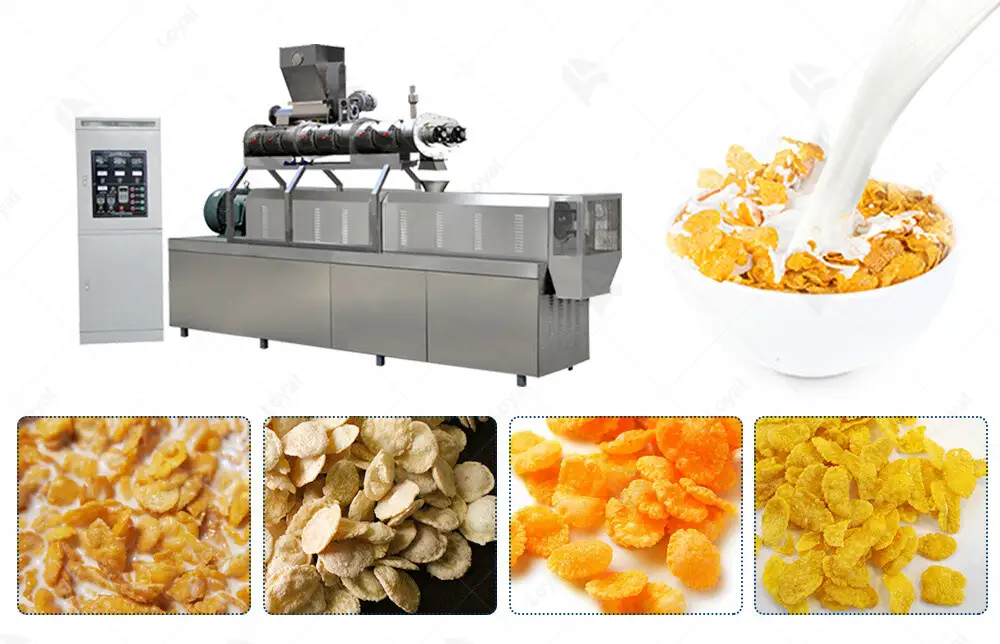
Advantages of Breakfast Cereal Making Machines
1. Efficiency |
- Increased Production Rate: Breakfast cereal making machines in 2024 are equipped with advanced automation and optimization features, allowing for higher production rates compared to manual processes. This results in greater output within shorter time frames. |
- Reduced Labor Costs: With the automation capabilities of modern breakfast cereal making machines, the need for manual labor is minimized. This not only reduces labor costs but also eliminates the risk of human error, ensuring consistent product quality. |
- Streamlined Processes: These machines integrate various production stages seamlessly, from mixing and cooking to shaping and packaging. This streamlining of processes enhances overall efficiency and reduces production downtime. |
2. Versatility |
- Ability to Produce Various Cereal Types: Breakfast cereal making machines in 2024 are designed to accommodate a wide range of cereal types, including flakes, puffs, granola, and extruded cereals. This versatility allows manufacturers to meet diverse consumer demands and preferences. |
- Customization Options: Manufacturers can easily adjust parameters such as ingredient proportions, cooking temperatures, and shaping techniques to create customized cereal products tailored to specific market segments. |
- Flexibility in Production Scale: Whether for small-scale artisanal production or large-scale industrial operations, breakfast cereal making machines offer flexibility in production scale, making them suitable for businesses of all sizes. |
3. Quality Assurance |
- Consistent Product Quality: By precisely controlling factors such as ingredient proportions, cooking temperatures, and processing times, breakfast cereal making machines ensure consistent product quality batch after batch. This consistency enhances consumer trust and brand reputation. |
- Uniformity in Product Appearance: These machines are capable of producing cereals with uniform size, shape, texture, and color, enhancing the visual appeal of the final product and maintaining brand consistency. |
- Compliance with Food Safety Standards: Breakfast cereal making machines adhere to strict food safety regulations and standards, ensuring that the end products are safe for consumption and free from contaminants. |
4. Cost-effectiveness |
- Optimized Resource Utilization: Breakfast cereal making machines are designed to optimize resource utilization, minimizing waste generation and maximizing yield. This results in cost savings on raw materials and reduces environmental impact. |
- Long-term Investment Value: While the initial investment in breakfast cereal making machines may be substantial, their long-term benefits in terms of increased productivity, reduced operational costs, and improved product quality justify the investment over time. |
- Competitive Advantage: Businesses that invest in state-of-the-art breakfast cereal making machines gain a competitive edge in the market by offering high-quality products at competitive prices, thereby attracting more customers and expanding their market share. |

The uses and varieties of breakfast cereals produced by this machine
1. Corn Flakes
Corn flakes remain one of the most popular and iconic breakfast cereals globally. Utilizing the breakfast cereal making machine, manufacturers can produce corn flakes of different shapes, sizes, and flavors to cater to diverse consumer preferences. Whether it's classic corn flakes or honey-glazed variants, the machine ensures consistent quality and texture, meeting the high standards expected by consumers.
2. Wheat Flakes
Wheat flakes are another staple in the breakfast cereal aisle, offering a hearty and nutritious option for consumers. With the breakfast cereal making machine, manufacturers can efficiently produce wheat flakes in various thicknesses and textures, allowing for customization according to market demand. From plain wheat flakes to those infused with fruits or nuts, the machine enables versatility in product offerings, appealing to a wide range of tastes.
3. Oat Flakes
Oat flakes have gained popularity in recent years due to their health benefits and versatility. The breakfast cereal making machine facilitates the production of oat flakes with precision, ensuring uniform thickness and optimal cooking properties. Whether consumers prefer plain oat flakes or those enriched with cinnamon or maple syrup, the machine can accommodate different formulations, providing options for health-conscious individuals and flavor enthusiasts alike.
4. Rice Crisps
Rice crisps offer a light and crispy breakfast option that appeals to both children and adults. Using the breakfast cereal making machine, manufacturers can produce rice crisps of varying shapes and sizes, from traditional round discs to fun and playful shapes. With the ability to control parameters such as temperature and pressure, the machine ensures consistent crunchiness and flavor in every bite, making rice crisps a beloved choice for breakfast or snacking.
5. Multi-Grain Blends
Multi-grain blends have become increasingly popular among health-conscious consumers seeking a nutritious and satisfying breakfast option. The breakfast cereal making machine enables manufacturers to create multi-grain blends incorporating a variety of grains such as oats, wheat, barley, and rice. By carefully adjusting the blending ratios and processing parameters, the machine can produce multi-grain blends that are not only delicious but also packed with essential nutrients, catering to the evolving preferences of health-conscious consumers.
In conclusion, the breakfast cereal making machine serves as a versatile and indispensable tool in the production of a wide range of breakfast cereals. From traditional favorites like corn flakes and wheat flakes to innovative creations like oat flakes and multi-grain blends, the machine empowers manufacturers to meet consumer demand for delicious, nutritious, and diverse breakfast options in 2024 and beyond.

Comparison table between loyal and NP companies
Aspect | Loyal | NP |
Product Range | Specializes in corn flake making machines, offering a diverse range of models catering to different production capacities and automation levels. | Focuses on rice cereal production lines, providing comprehensive solutions for rice cereal manufacturing, including processing, shaping, and packaging equipment. |
Technology | Incorporates advanced automationfeatures such as PLC control systems, touch screen interfaces, and servo motors for precise operation and efficient production. | Utilizes state-of-the-art extrusion technologyfor rice cereal production, ensuring uniformity in shape, texture, and flavor across the product line. |
Customization | Offers customization options for flavoring systems, allowing clients to tailor their corn flakes with various coatings, seasonings, and additives according to market preferences. | Provides flexibility in line configurations, enabling clients to choose from a range of processing modules and ancillary equipment to meet specific production requirements. |
Quality Assurance | Adheres to stringent quality control standards, with all machines undergoing rigorous testing and inspection procedures to ensure reliability, durability, and compliance with industry regulations. | Emphasizes food safetythrough hygienic design principles, material selection, and sanitation protocols to prevent contamination and maintain product integrity throughout the production process. |
After-Sales Support | Offers comprehensive technical supportand maintenance services, including training programs for operators and on-site troubleshooting assistance to minimize downtime and maximize productivity. | Provides responsive customer serviceand spare parts availability, ensuring prompt assistance and quick resolution of any issues encountered during operation to optimize equipment performance and uptime. |
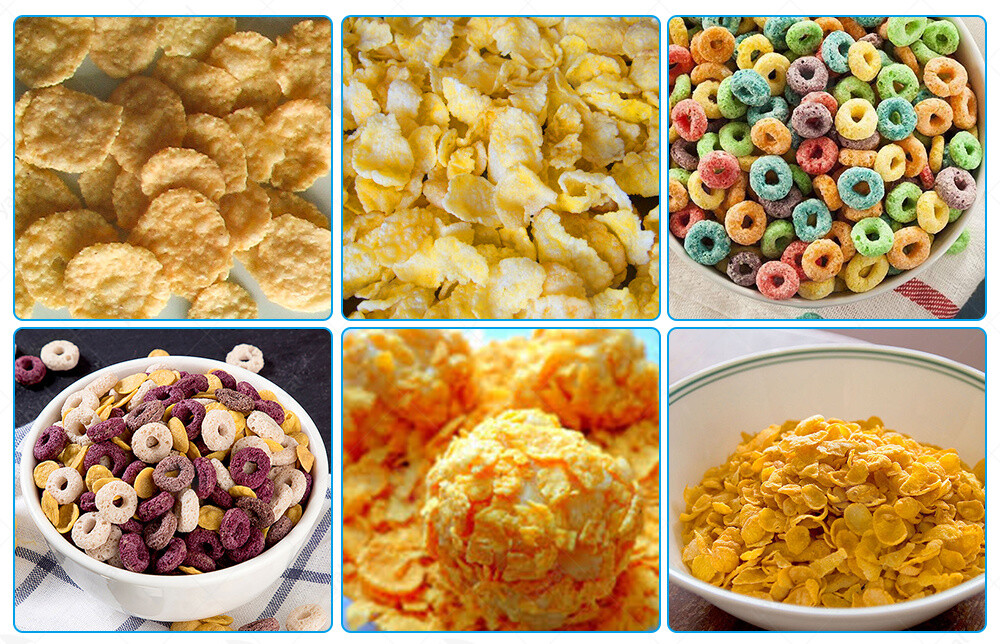
Breakfast Cereal Production Efficiency and Productivity Improvement
In the bustling landscape of breakfast cereal production, the quest for efficiency and productivity reigns supreme. As we navigate through the intricate web of technological advancements and consumer demands in 2024, the role of breakfast cereal making machines stands as a beacon of innovation and progress.
Breakfast cereal making machines have undergone a remarkable evolution, revolutionizing the way cereals are manufactured on an industrial scale. In 2024, these machines are equipped with state-of-the-art automation and optimization features, aimed at enhancing efficiency and productivity across the production line.
One of the key factors driving efficiency in breakfast cereal production is the integration of advanced sensors and control systems into breakfast cereal making machines. These technologies enable real-time monitoring and adjustment of various parameters such as temperature, moisture content, and mixing ratios, ensuring optimal conditions for cereal production. By maintaining precise control over these variables, manufacturers can minimize wastage and maximize yield, ultimately leading to significant improvements in productivity.
Furthermore, the implementation of automation features in breakfast cereal making machines has revolutionized production processes, reducing the reliance on manual labor and streamlining operations. Automated feeding systems, ingredient dispensers, and packaging lines work seamlessly together to minimize downtime and maximize throughput. This not only accelerates the production process but also reduces the risk of errors and inconsistencies, ensuring consistent quality across batches.
In addition to automation, the integration of optimization algorithms and data analytics capabilities has further augmented the efficiency of breakfast cereal making machines. By analyzing production data in real-time, manufacturers can identify bottlenecks, optimize production schedules, and fine-tune machine settings for optimal performance. This data-driven approach enables continuous improvement and adaptive manufacturing, allowing manufacturers to stay agile in response to changing market demands.
Moreover, advancements in materials and engineering have contributed to the development of breakfast cereal making machines that are not only more efficient but also more durable and reliable. From corrosion-resistant components to high-precision machining techniques, these machines are built to withstand the rigors of continuous operation, ensuring minimal downtime and maximum uptime for manufacturers.
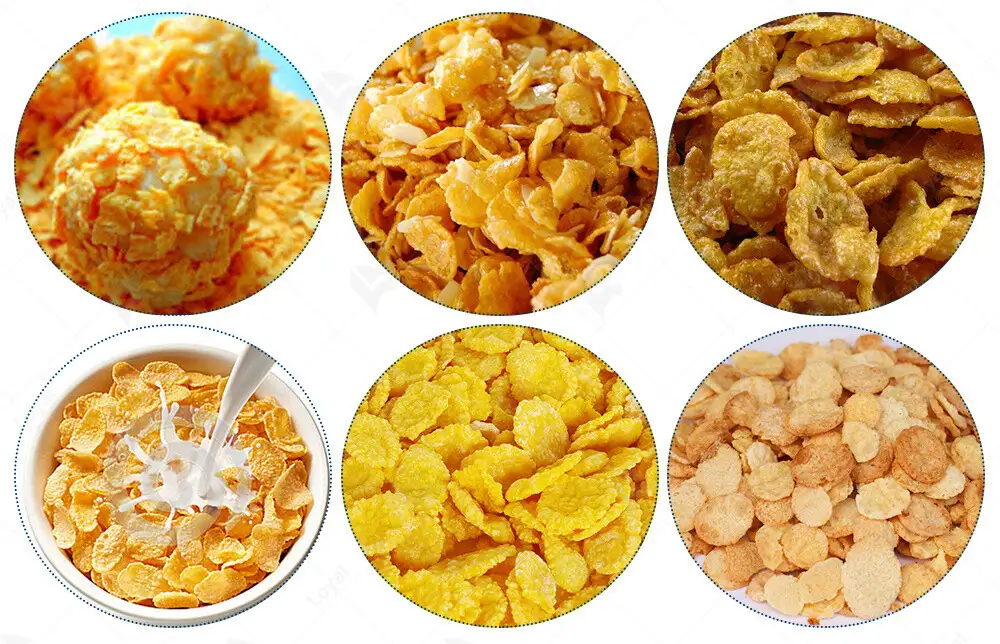
Sustainability and environmental considerations
Sustainability in Breakfast Cereal Production:
Breakfast cereal making machines have undergone significant advancements in recent years, not only in terms of efficiency and productivity but also in their environmental footprint. Manufacturers are increasingly focusing on integrating sustainable practices and technologies into these machines to minimize resource consumption and waste generation.
Eco-Friendly Practices:
One of the key initiatives embraced by manufacturers of breakfast cereal making machines is the incorporation of eco-friendly materials and components. From utilizing recycled materials in machine construction to adopting energy-efficient motors and systems, these practices contribute to reducing the environmental impact of production processes.
Energy Efficiency:
Another critical aspect of sustainability in breakfast cereal production is energy efficiency. Modern breakfast cereal making machines are designed to optimize energy consumption throughout the production cycle. This includes features such as variable-speed drives, intelligent control systems, and heat recovery mechanisms, all aimed at reducing energy wastage and lowering carbon emissions.
Waste Reduction:
Efforts to minimize waste generation are also integral to sustainable breakfast cereal production. Breakfast cereal making machines are equipped with advanced waste management systems, including in-line monitoring and sorting capabilities, to segregate and recycle materials efficiently. Additionally, innovative packaging solutions are being developed to minimize packaging waste and promote recycling.
Environmental Compliance:
In line with regulatory requirements and industry standards, manufacturers ensure that breakfast cereal making machines adhere to strict environmental guidelines. This includes compliance with emissions regulations, waste disposal protocols, and the use of non-toxic materials. By prioritizing environmental compliance, manufacturers demonstrate their commitment to sustainability and responsible manufacturing practices.
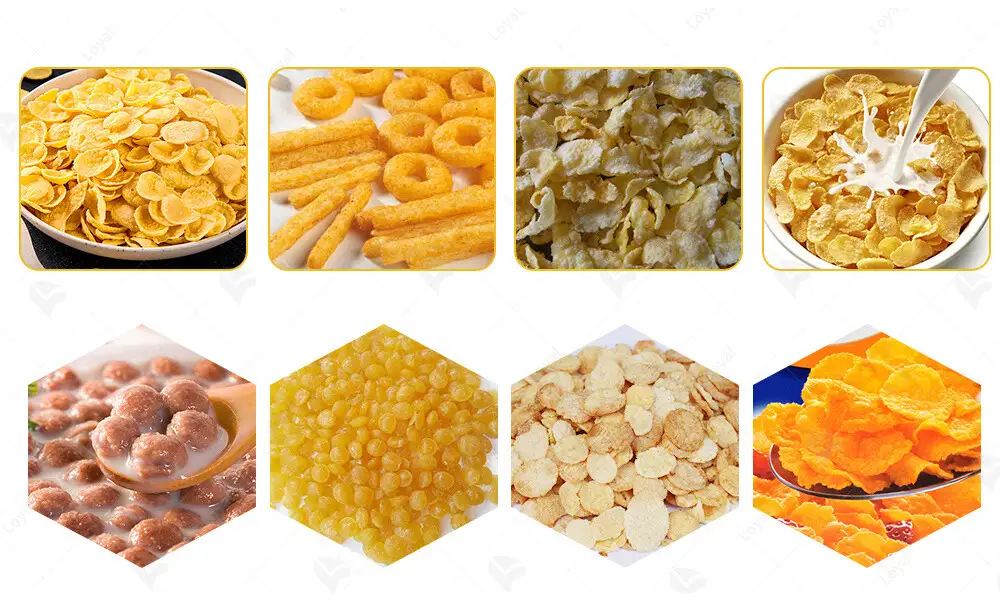
Post-maintenance Guide
1. Inspection and Cleaning Procedures:
- Conduct a thorough inspection of all components, including the mixing chambers, extruders, and conveyor belts, to identify any signs of wear or damage.
- Utilize appropriate cleaning agents and equipment to remove residue buildup and maintain hygiene standards.
- Pay special attention to areas prone to accumulation, such as crevices and corners, to prevent contamination and ensure food safety.
2. Lubrication and Calibration:
- Regularly lubricate moving parts and bearings to reduce friction and prevent premature wear.
- Follow manufacturer guidelines for lubricant selection and application to avoid compatibility issues and ensure optimal performance.
- Periodically calibrate sensors and control systems to maintain accuracy and consistency in product quality and processing parameters.
3. Troubleshooting and Problem-Solving:
- Develop a systematic approach to identify and address common issues, such as clogging, misalignment, or overheating.
- Keep detailed records of maintenance activities and performance metrics to facilitate troubleshooting and root cause analysis.
- Establish clear communication channels with equipment suppliers or service providers for timely assistance and resolution of technical challenges.
4. Safety Measures and Compliance:
- Prioritize employee training and education on proper operation procedures, safety protocols, and emergency response protocols.
- Regularly conduct risk assessments and safety audits to identify potential hazards and implement preventive measures.
- Stay updated on industry regulations and compliance standards to ensure adherence to food safety and quality guidelines.
5. Performance Optimization and Upgrades:
- Explore opportunities for performance optimization through software updates, equipment upgrades, or process refinements.
- Engage with industry experts and equipment manufacturers to stay informed about the latest advancements and best practices.
- Consider investing in additional features or accessories, such as automated cleaning systems or predictive maintenance technologies, to enhance efficiency and reliability.
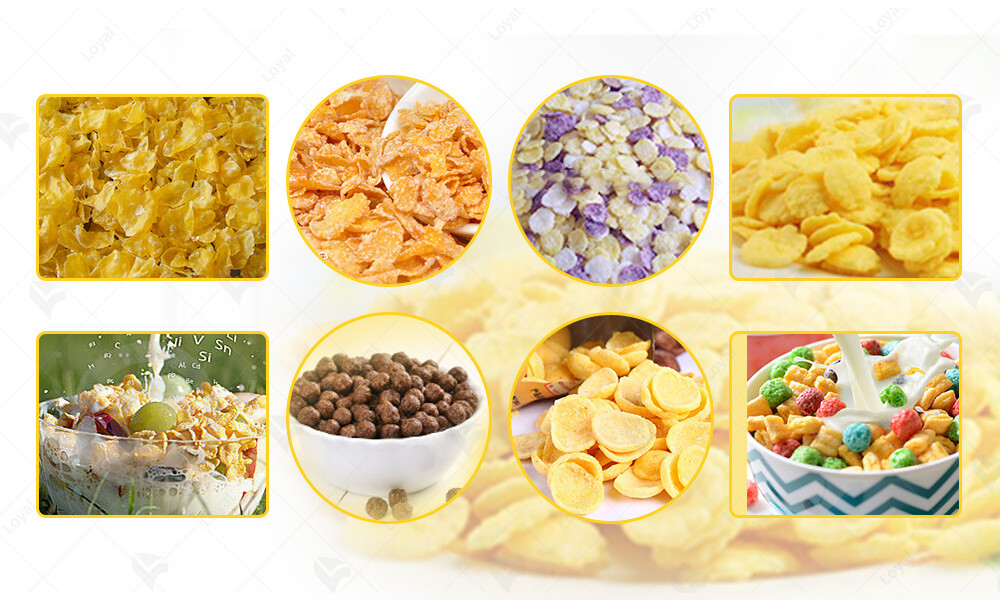
Reference materials
Here are some authoritative foreign websites for industrial food machinery-related literature references, along with their URLs:
1. Food Engineering Magazine
Website: [https://www.foodengineeringmag.com/]
2. Food Processing Magazine
Website: [https://www.foodprocessing.com/]
3. Institute of Food Technologists (IFT)
Website: [https://www.ift.org/]
4. American Society of Agricultural and Biological Engineers (ASABE)
Website: [https://www.asabe.org/]
5. European Federation of Food Science and Technology (EFFoST)
Website: [https://effost.org/]
These websites provide a wide range of information related to industrial food machinery, including the latest industry news, research findings, and technological trends, making them valuable resources for authoritative references and academic research.












